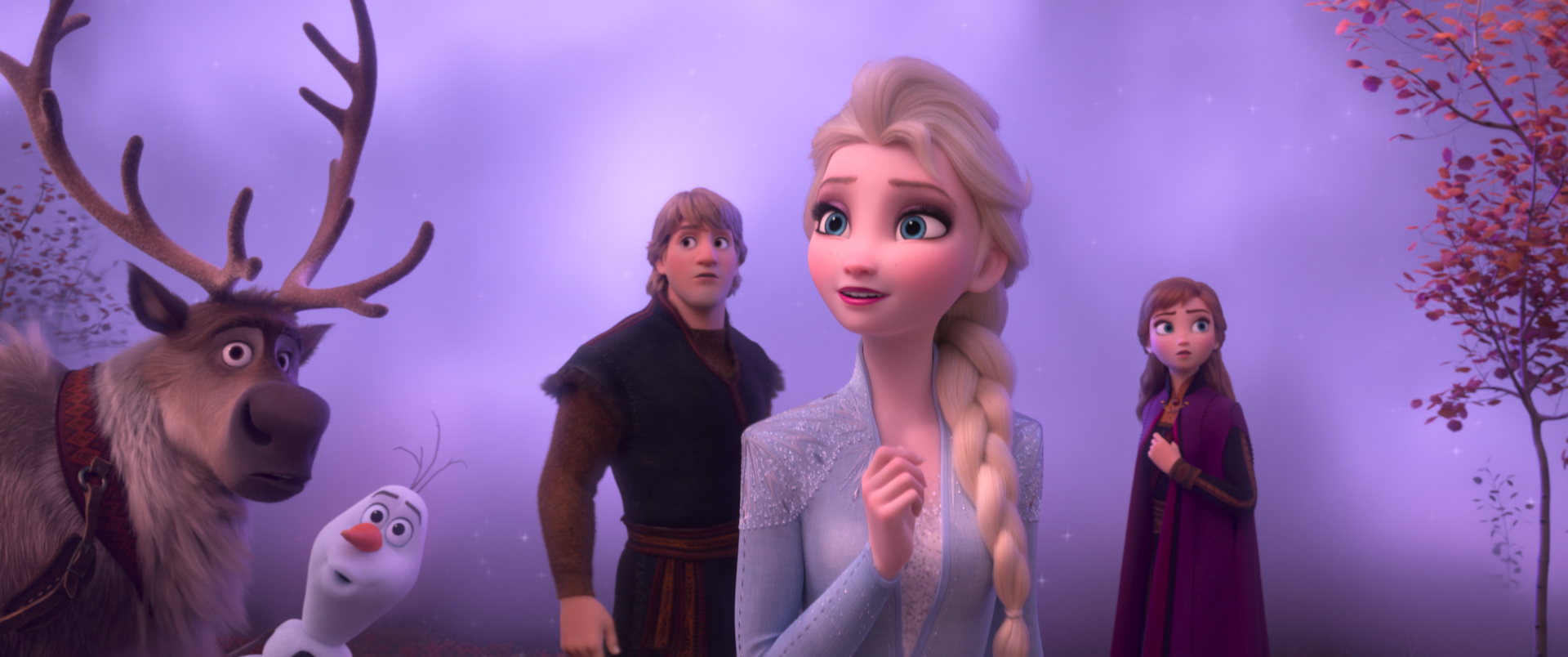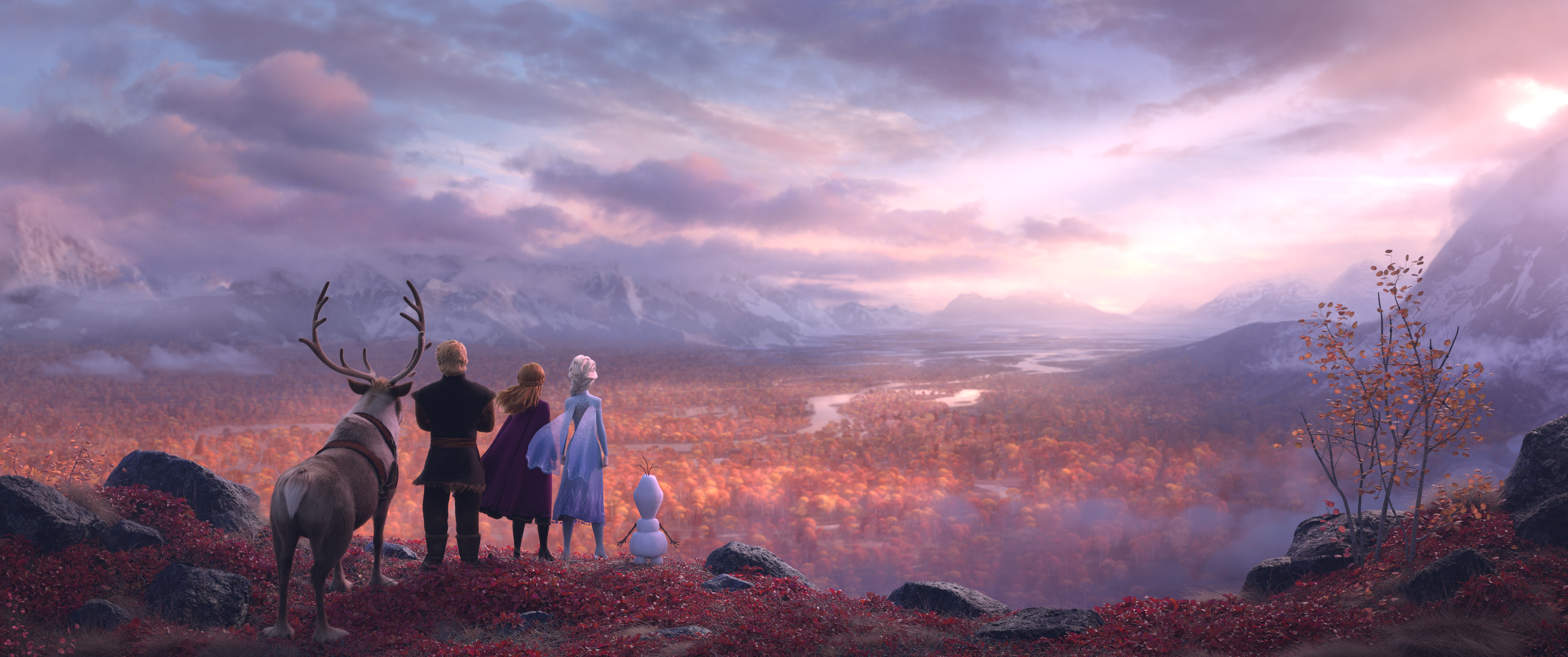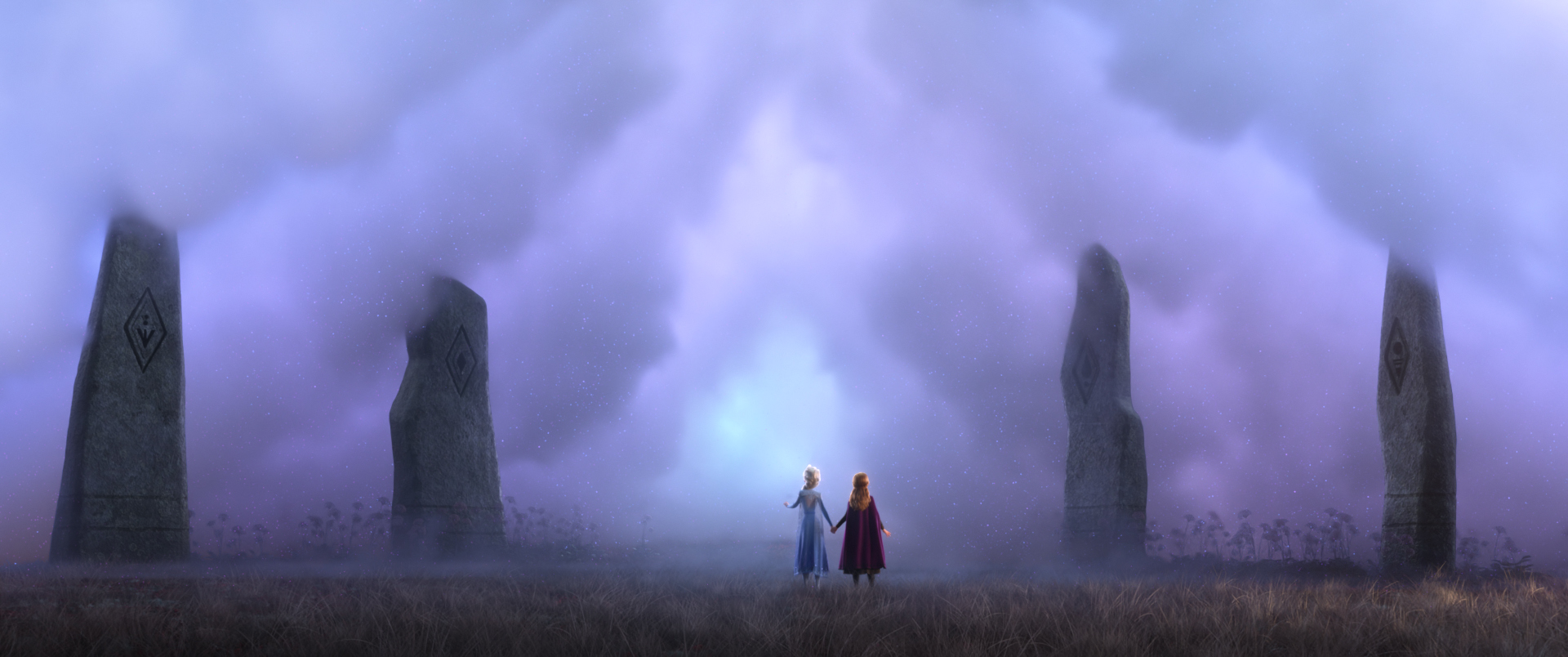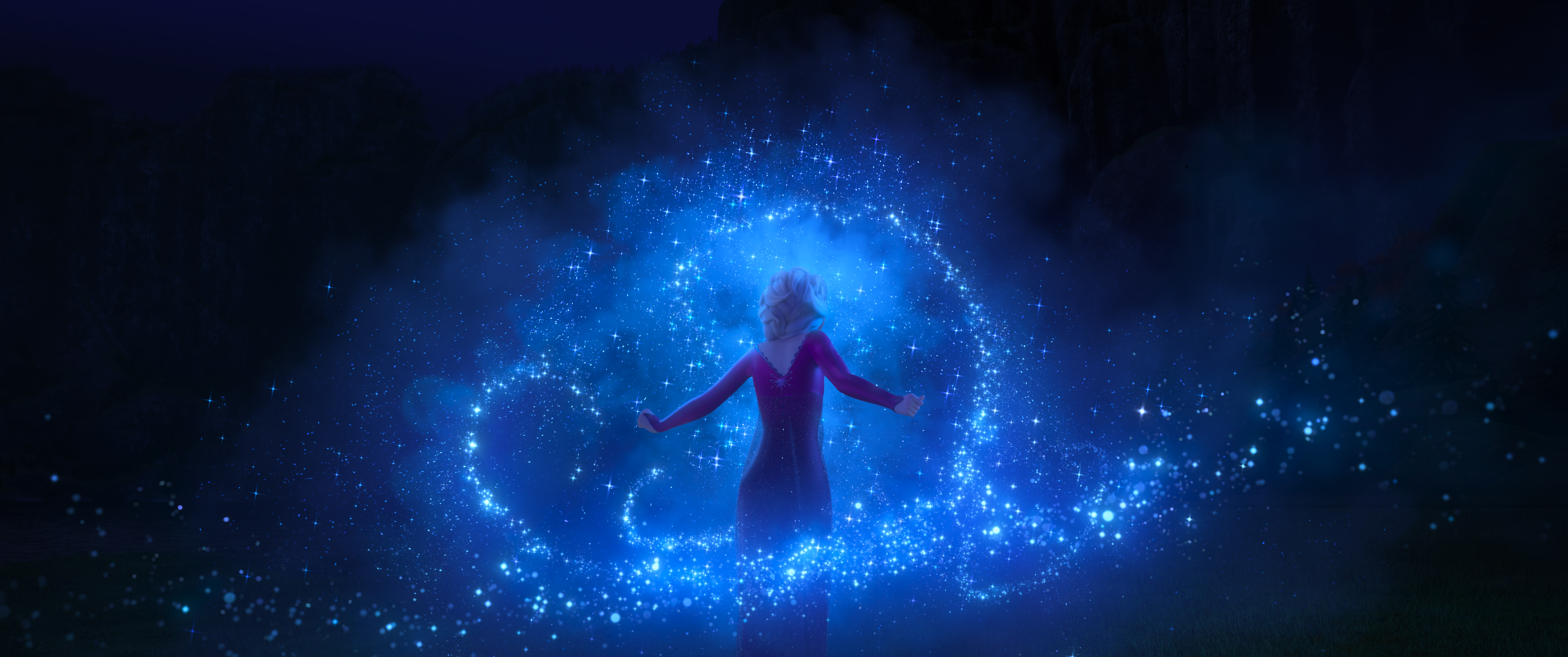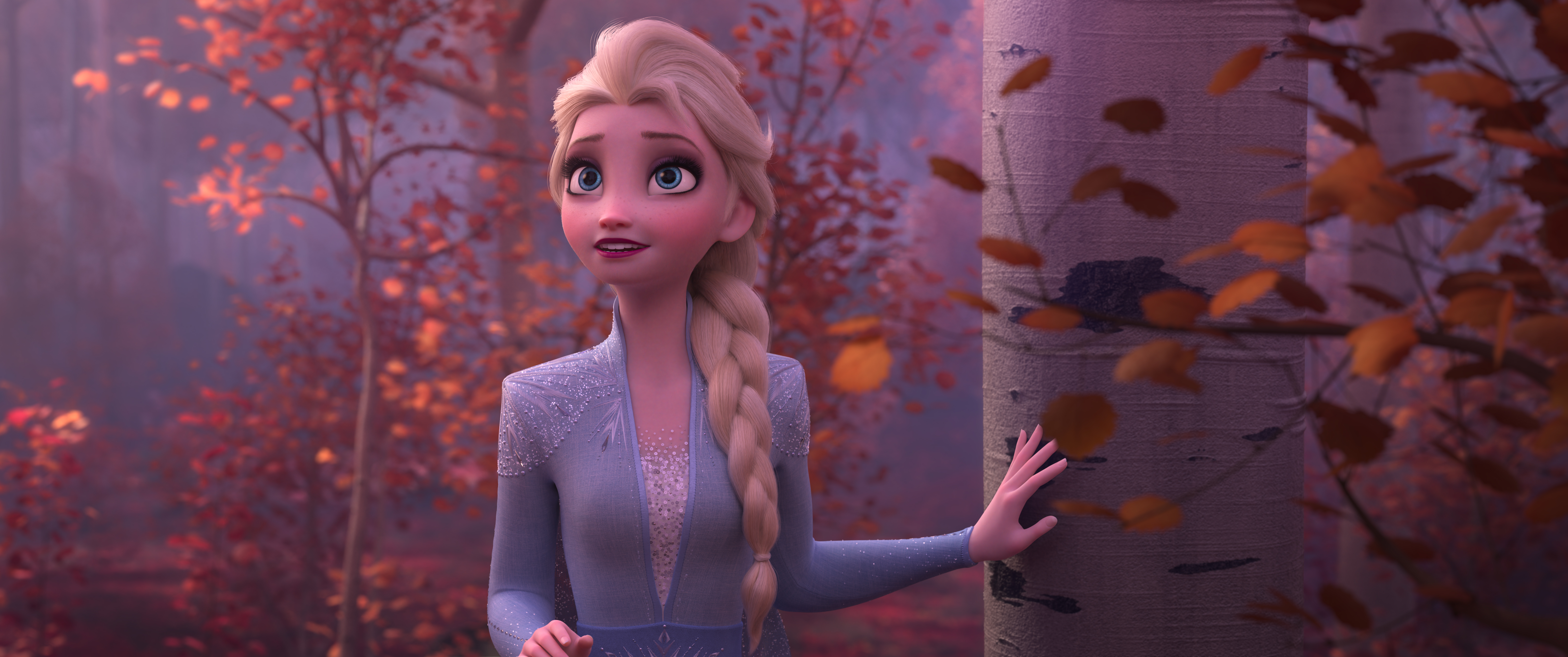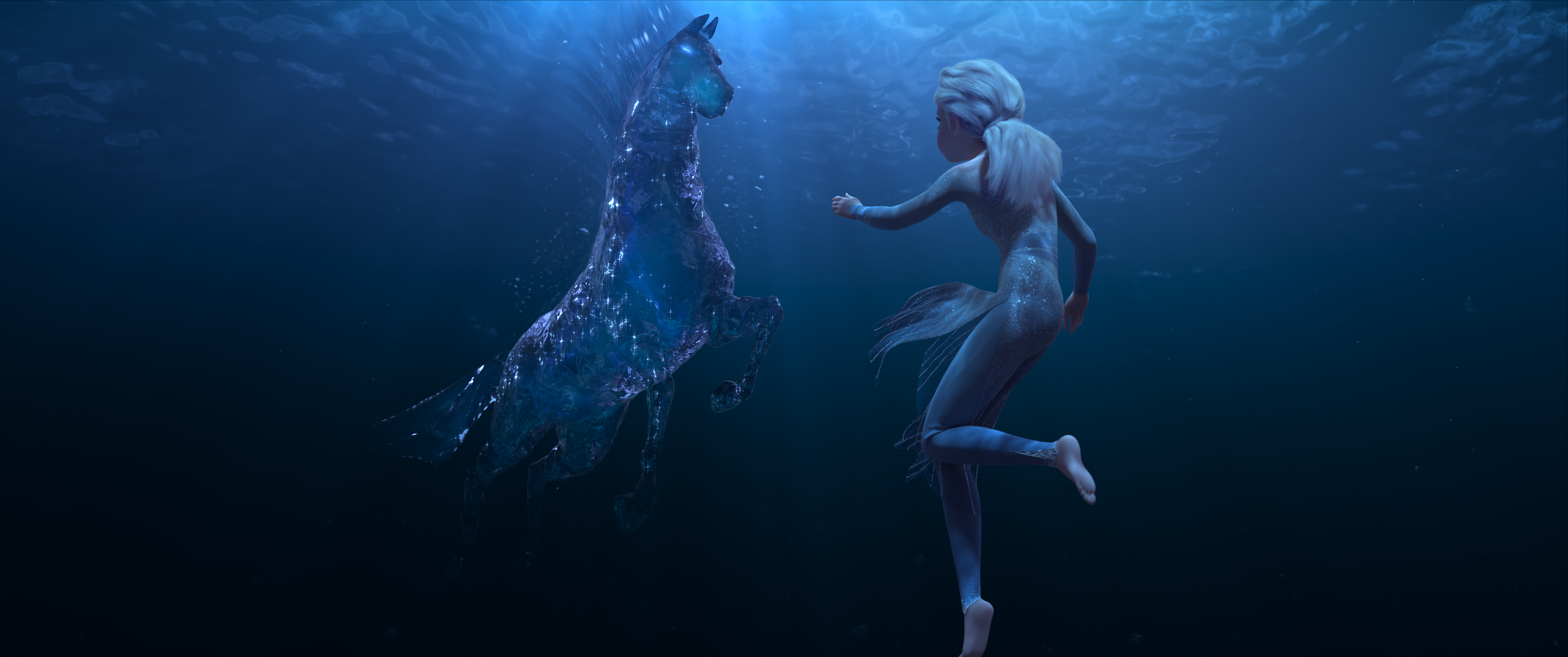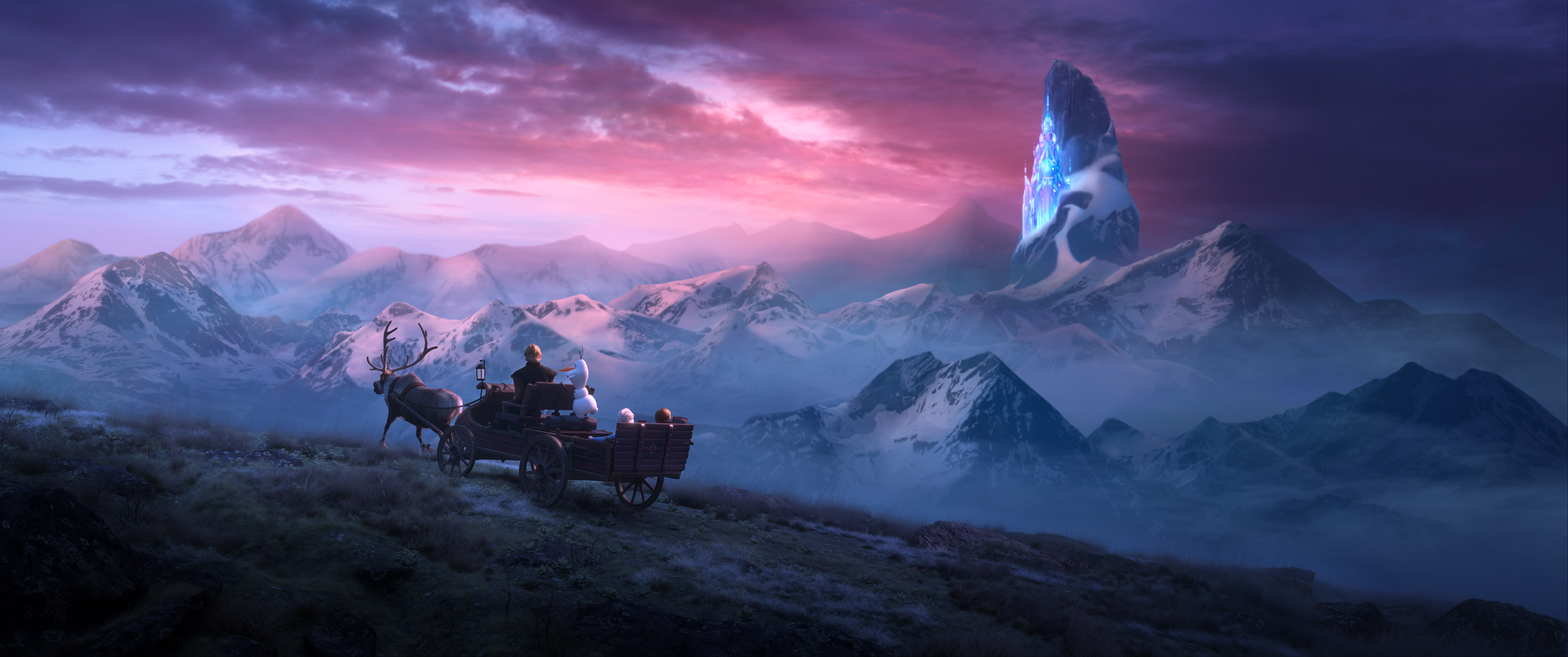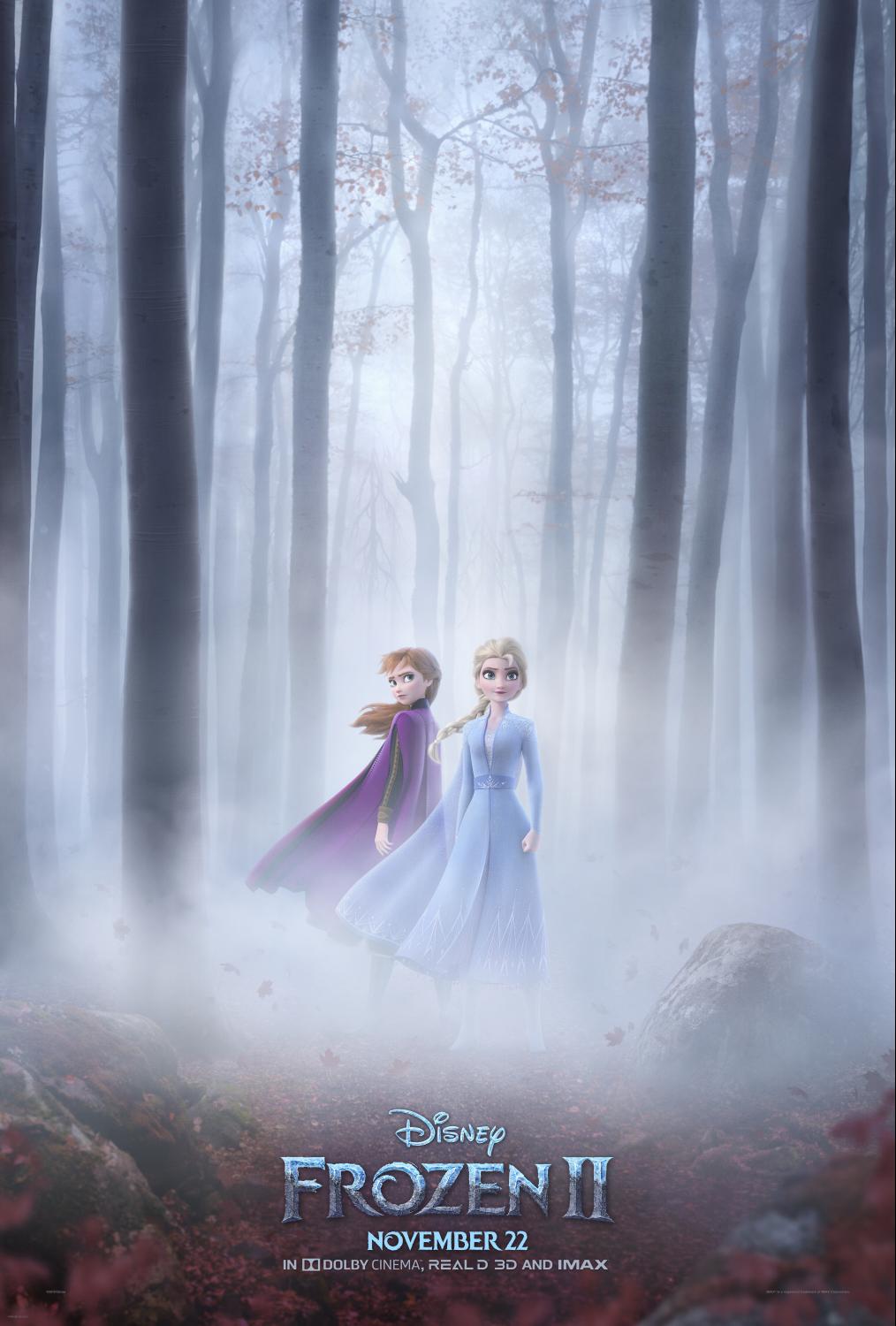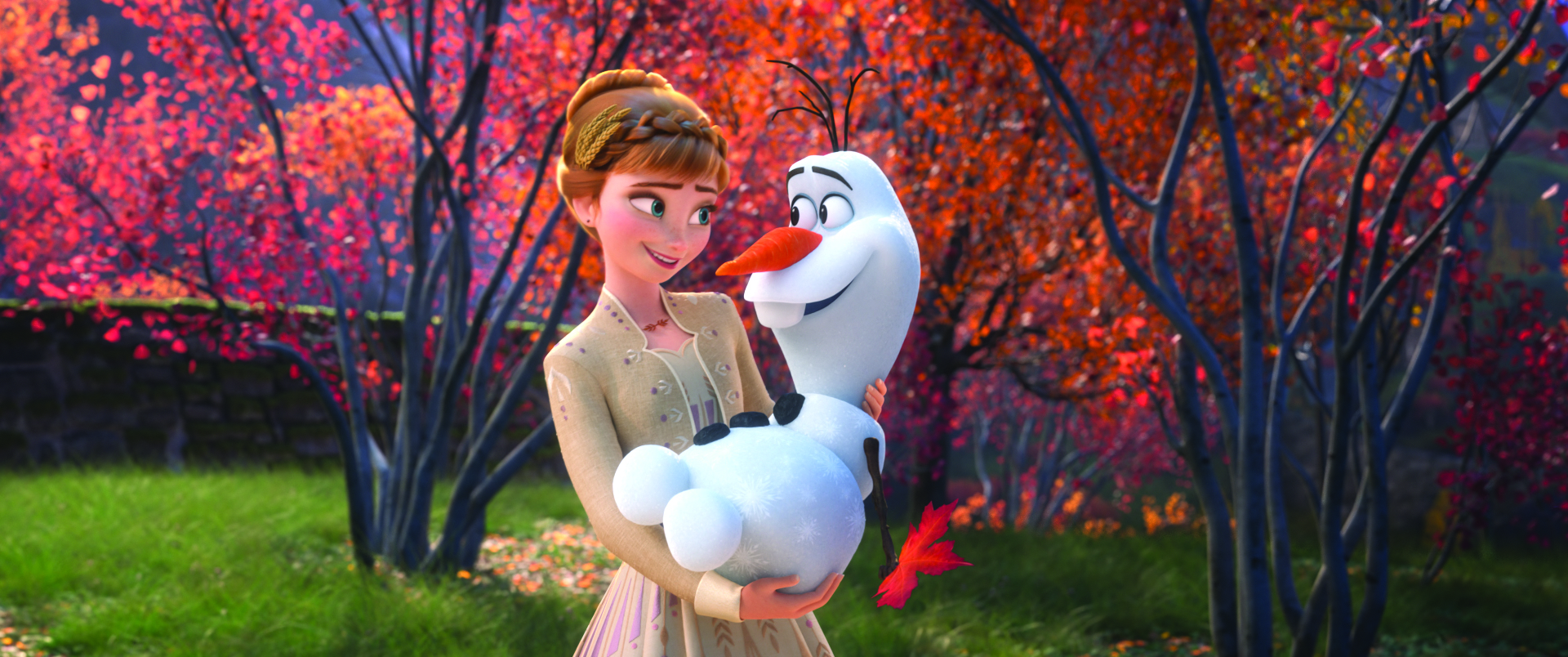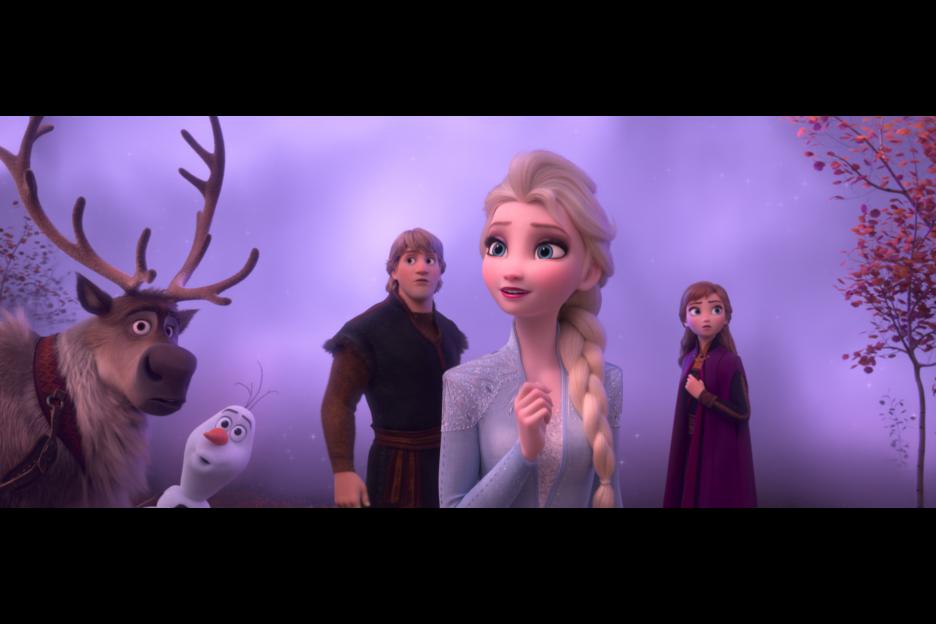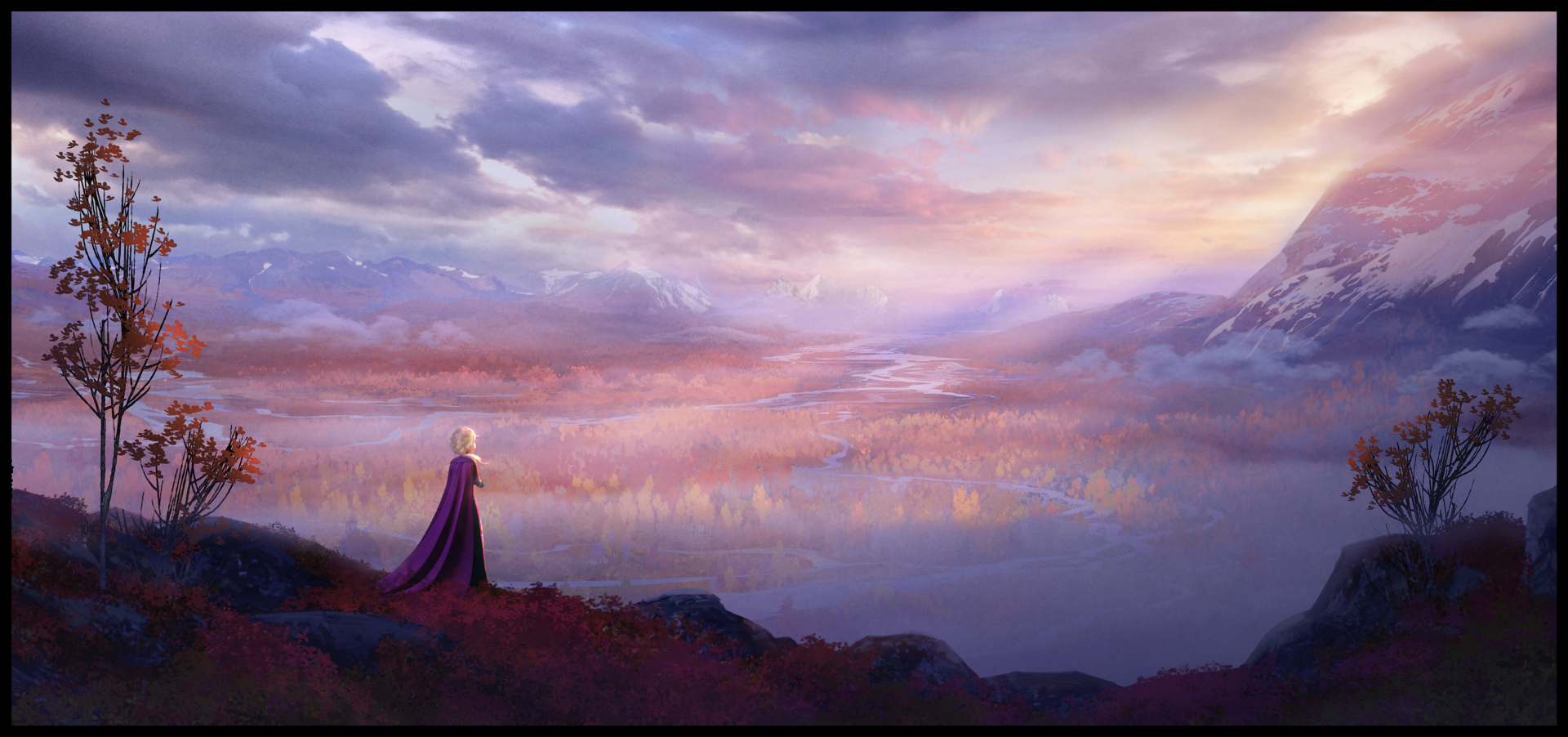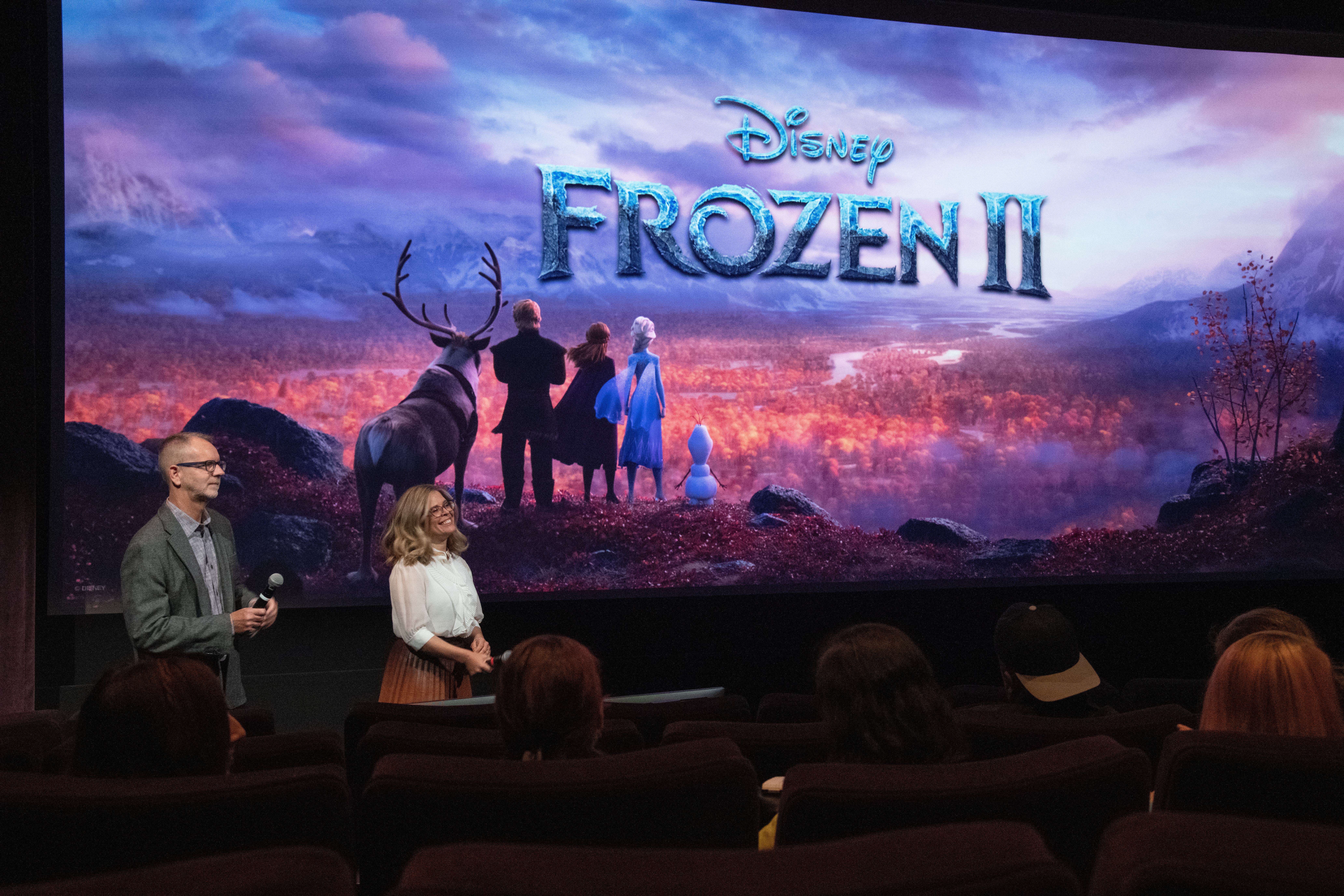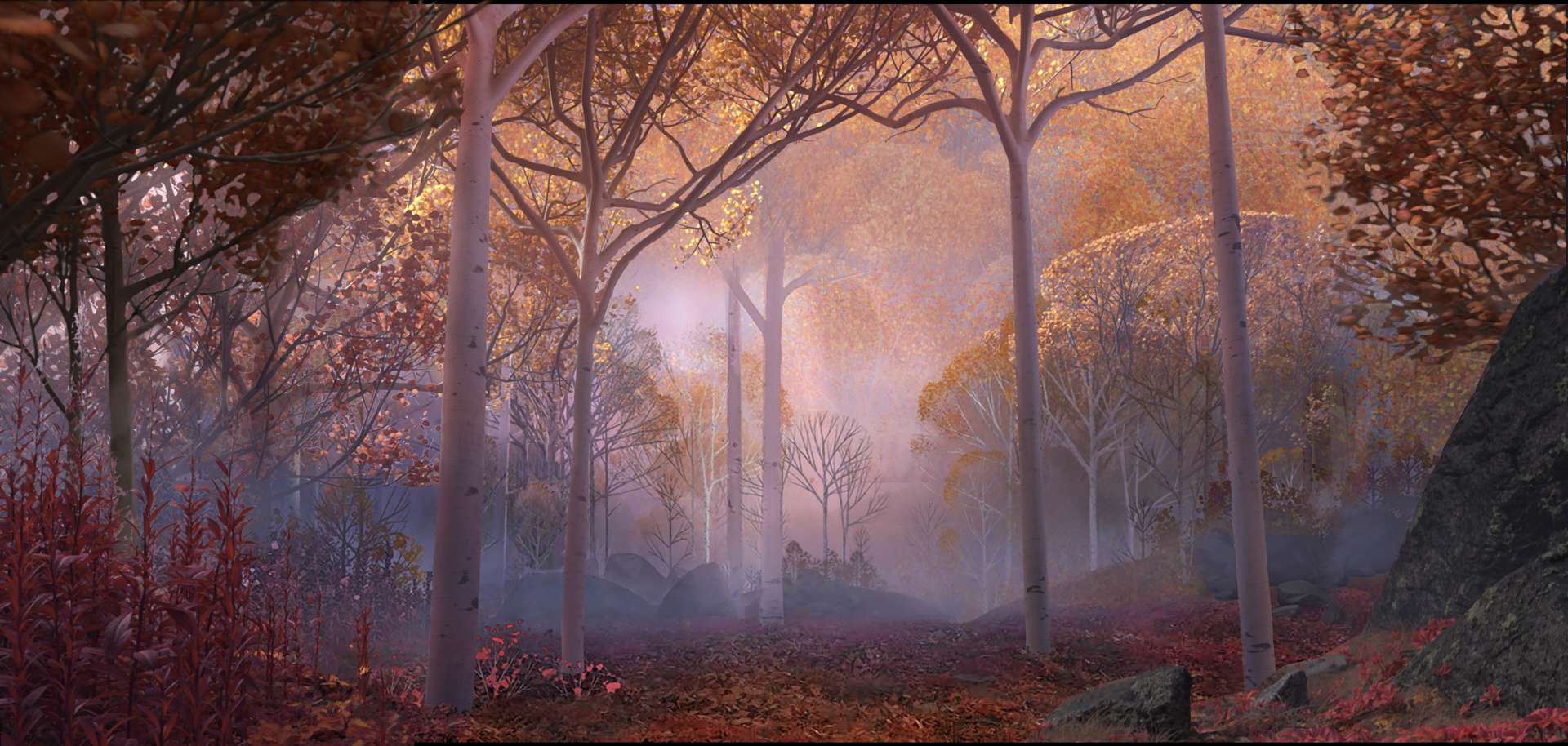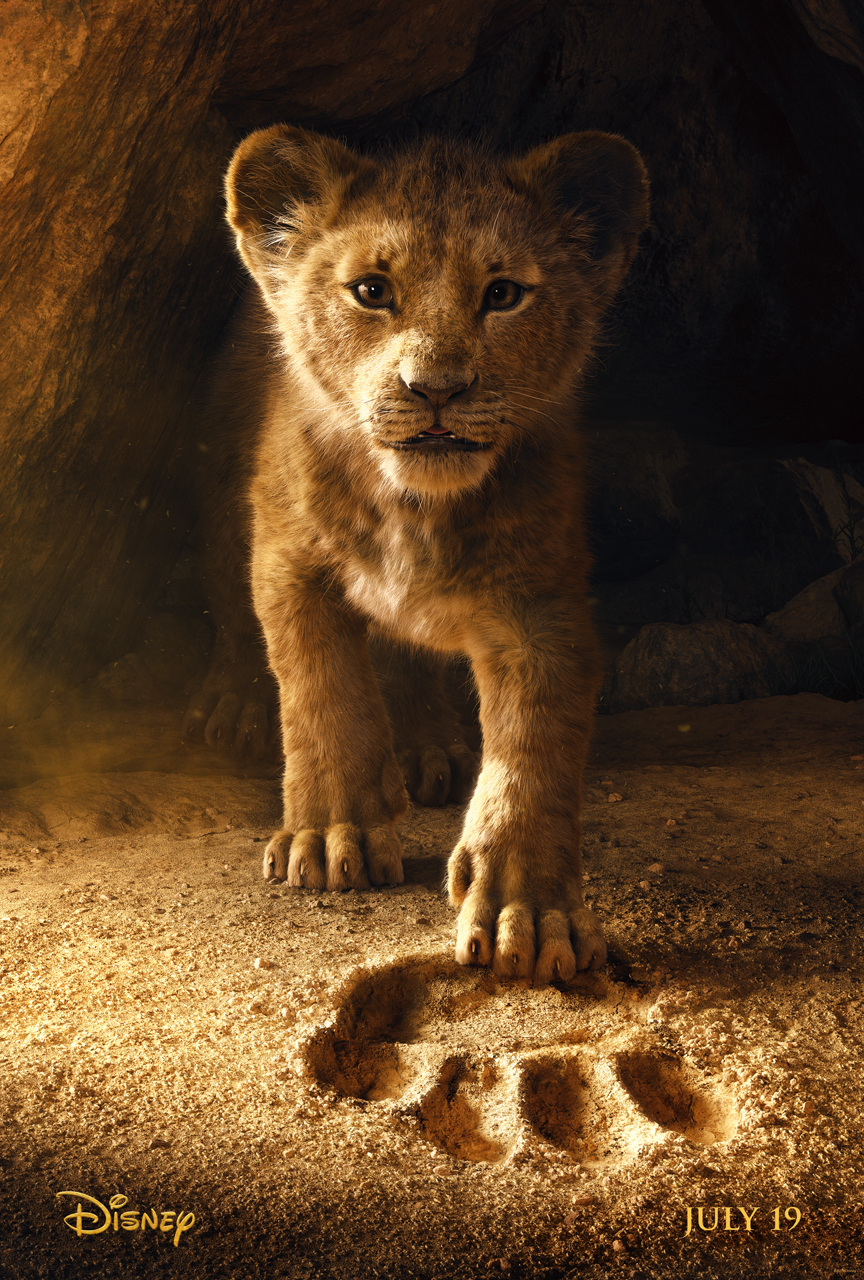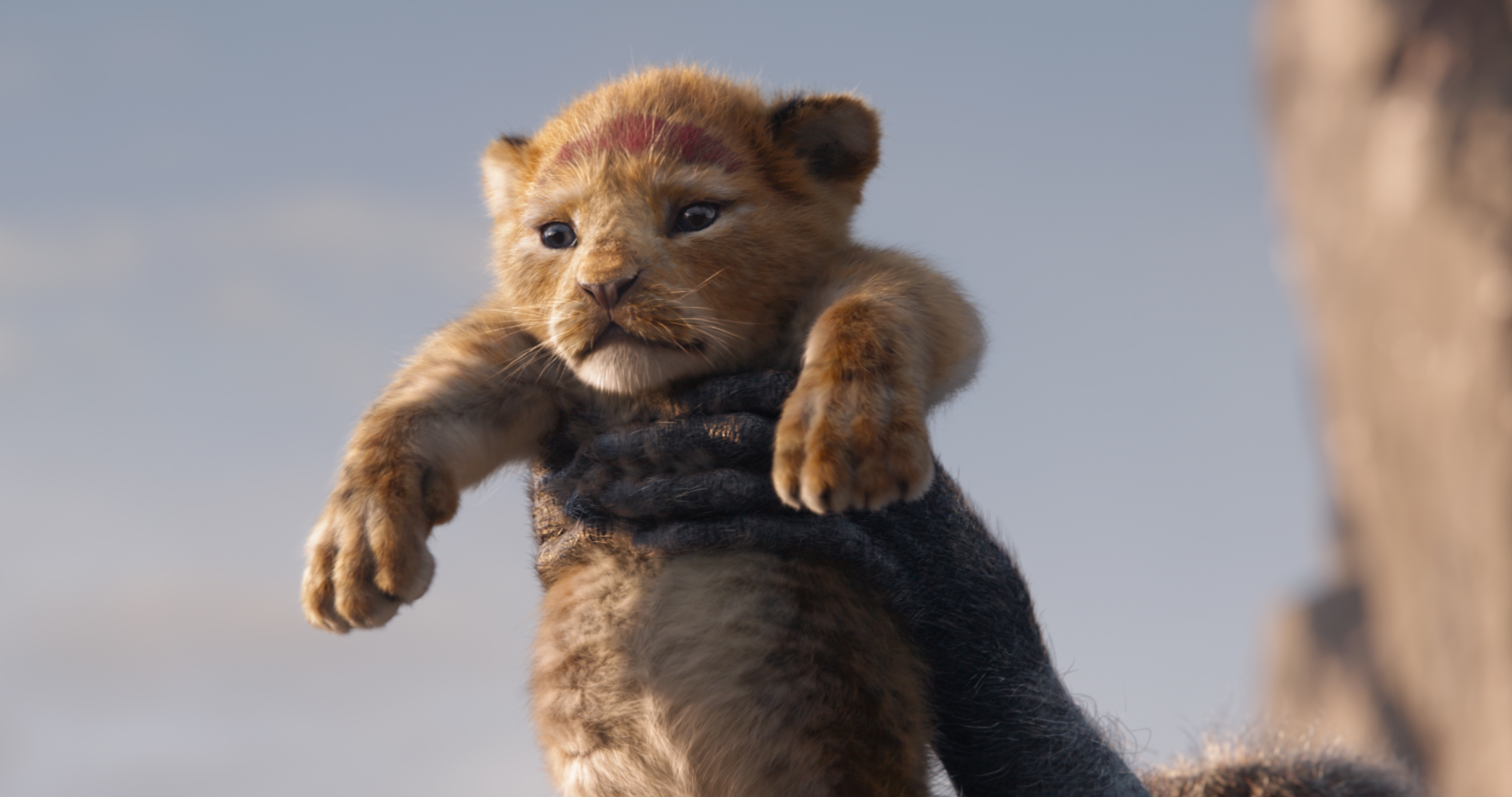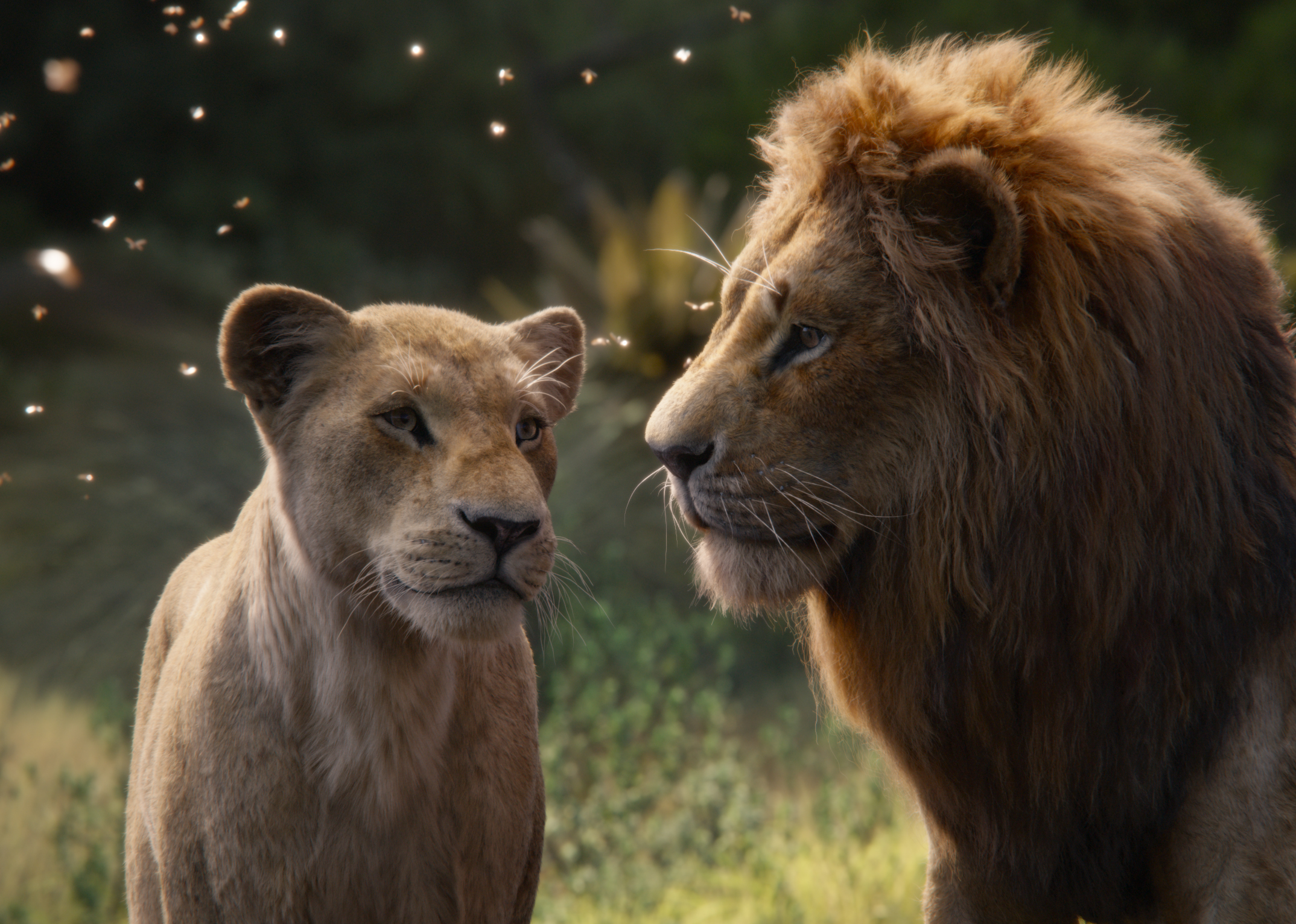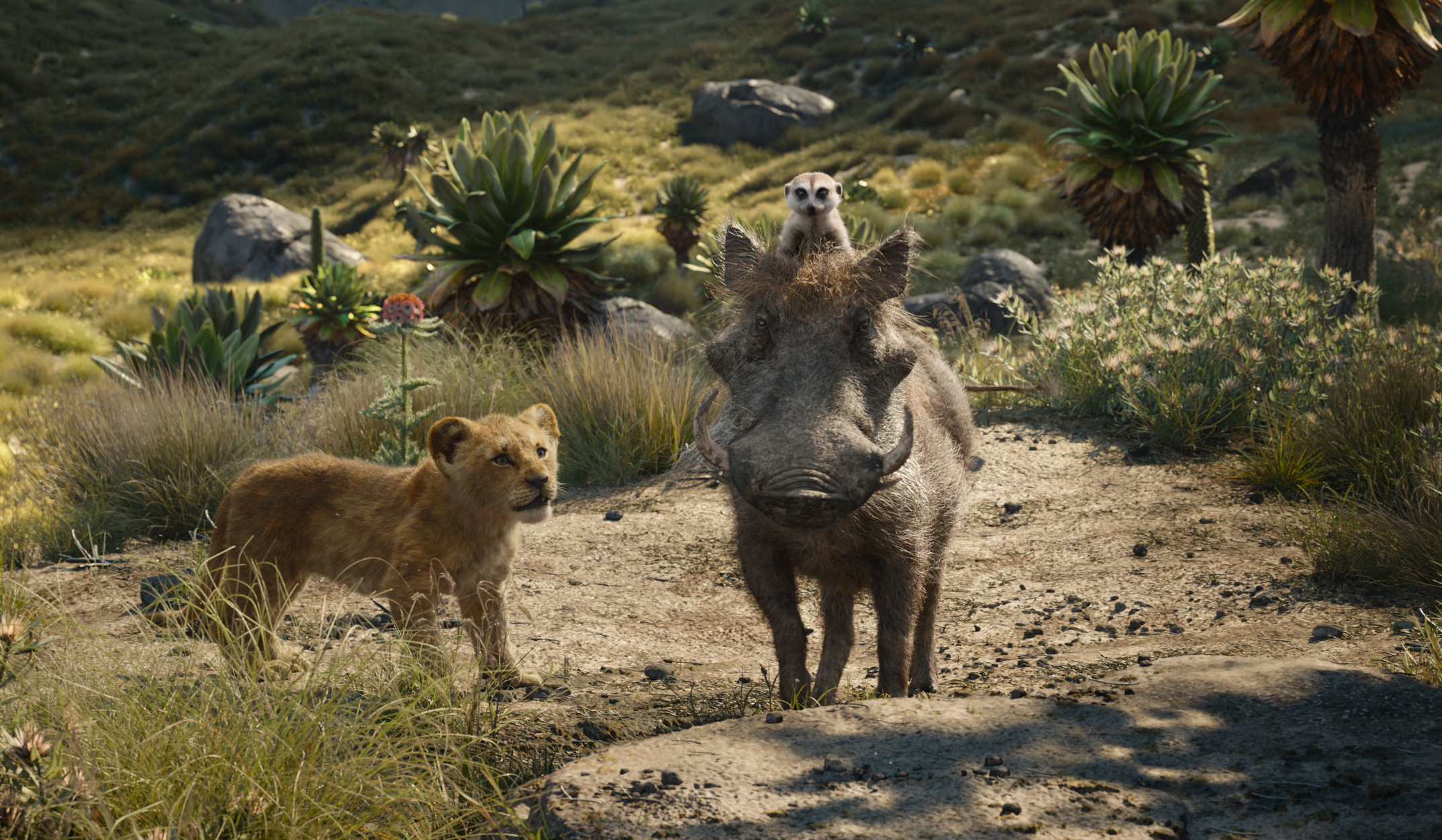Unlocking the Movie Magic of “Frozen 2” at Walt Disney Animation Studios
By Melanie Gable
*Erin Miller invited me to attend an early press day for “Frozen 2” at Walt Disney Animation Studios in her place for the purposes of this article. All thoughts and opinions are my own.
If you’re reading this, you’re probably well aware of the impact that “Frozen” has had on pop culture since it was released in theaters in 2013. Fans of the film, especially kids, couldn’t seem to get enough of royal sisters Elsa (Idina Menzel) and Anna (Kristen Bell), mountain man Kristoff (Jonathan Groff), his reindeer friend Sven, and adorable snowman Olaf (Josh Gad). Disney responded to the demand by creating two animated short films, “Frozen Fever” and “Olaf’s Frozen Adventure,” as well as incorporating the characters and stories into their theme parks and producing a Broadway show based on the movie.
But even with all of this follow-up, the filmmakers behind “Frozen” still felt there were enough mysteries in the story that were worth exploring. At the early press day for “Frozen 2” at Walt Disney Animation Studios, bloggers and journalists had the opportunity to get insight into the making of the movie from some of the studio’s brightest talents, including the film’s directors, Jennifer Lee and Chris Buck.
“There were still a lot of questions from the first film that were unanswered,” said Buck. “Why does Elsa have icy powers? How have they grown since Anna saved Elsa’s life? Why was Anna born the way she was? Where were the parents going when their ship went down? And is there really such a thing as happily ever after?”
“We all know that just as you’ve got things worked out, life throws you a curveball or a new path,” Lee began, adding that Elsa is being called away from Arendelle by a mysterious voice that only she can hear, and feels compelled to follow it. “And having to answer that call in life, the thing that speaks to you…it’s scary, can be dangerous–depending–but it’s an important thing to explore.”
Finding Inspiration in Scandinavia
Before starting major work on “Frozen 2,” Lee, Buck, and other key artists and storytellers from Walt Disney Animation Studios had the opportunity to do some exploring of their own by traveling to Scandinavia and Iceland during the fall season to find inspiration for the film from the region’s landscapes, people, and culture. (For the full story on their research trip, click here.)
Norse mythology and folklore provided a way to link Elsa’s powers to the world around her and set her quest for answers in motion. “I think that trip not only inspired visuals in the world [of ‘Frozen 2’], but it did something else,” said producer Peter Del Vecho. “Just immersing us 24 hours a day in that environment, our imaginations truly were piqued, and so a lot of story ideas developed during that trip as well.”
Fairy Tale and Myth
Marc Smith, the film’s director of story, was also on the research trip. “When we started on this movie three and a half years ago, we really took a deep dive into who these characters are, and not just who were they at the end of ‘Frozen,’ but what is the hardwiring that’s going all the way through ‘Frozen’ and into ‘Frozen 2,'” said Smith. The coziness and enchantment of Norway and Finland, in contrast to the harsh landscape of Iceland, became metaphors for Anna and Elsa’s journeys.[/caption]
“We started developing these themes of fairytale and myth. But how does that connect to [Elsa and Anna]?” asked Smith. Anna’s positivity and belief in happy endings was more like a fairytale character, whereas Elsa’s outlook, feeling as though the weight of the world was on her shoulders, was closer to that of a mythic character. “It was really pivotal, this discovery,” he said. “It really gave us our two main characters that have these opposing worldviews, and that really, really helped us to start cracking the story.”
Becky Bresee, one of the heads of animation on “Frozen 2,” spoke about how the story informed the animation. “Our characters have matured and they embark on a journey that was not only challenging for them, but also for us as a team,” she confessed. “Now our characters are established as a family, and so there tended to be many more scenes in the film that had all of them in it. This was challenging as an added complexity, as they all have to have motion, but, more importantly, emotion.” Bresee and her animation team were more than up to the task, though. “It was exciting to get to collaborate again with all the different departments and to meet these challenges,” she enthused.
Hyun-Min Lee, who took over for Bresee as Anna’s animation supervisor on “Frozen 2,” told us about the character’s inner life that needed to be expressed in everything from her wardrobe to her body language. “Unlike the first film, Anna is not alone anymore and she feels like she has everything she could ever need. She has her whole family with her, Arendelle, and all the people she loves, and that’s the source of her strength and her optimism,” Lee explained. “She definitely doesn’t want to lose this current state of bliss. And as the winds of change are coming, Anna is very protective of her clan, of her people, all of her loved ones. And she’ll do anything to do the right thing for them, including kicking their butts and getting rid of the bad guys. She’ll do whatever it takes.”
Wayne Unten was Elsa’s animation supervisor for both “Frozen” and its sequel. “These characters are like our kids and after the first film was done, you miss them,” Unten mused. “So, it was really nice just to revisit these characters and just see them grow.” Of course, each character’s growth and emotions had to be reflected in the animation, while still staying true to their essence. “As animators, our job is to communicate clearly to the audience what the character is thinking and feeling,” he shared. “We craft each expression…blinks, the body poses…something special happens and the audience forgets that what we’re seeing is a puppet, but it’s an actual, breathing, living character. And they just get sucked up into the story. That is why I love doing animation.”
Stepping “Into the Unknown”
There’s a great deal of collaborative work that goes into animating even just one musical sequence in a film like “Frozen 2,” starting with visual development. Brittney Lee, a visual development artist on the film who also worked on “Frozen,” described the thought and care that goes into designing the costumes and hair of a character, especially one as beloved as Elsa.
“As visual development artists, we are tasked with designing the film and design’s role in the film,” Lee began. “In everything that you see, we’re trying to infuse a little bit of information to help the audience process the story and try to support the journey that we’re building.” Lee and other visual development artists work to incorporate story into everything from the character’s hairstyles to the color palette and silhouette of their costumes, which can be a reflection not only of the time and place of the scene, but also the inner feelings of the character.
Like a costume designer for a play or live action film, Lee asserted that, “We even go down to the very deepest steps of calling out exactly what material we want for every little thing,” including details such as embroidery and beading, which current animation technology is able to render beautifully. “So hopefully, with all of this information on her costume you know a little bit more about her before she ever sings her first note,” Lee concluded.
After visual development, the scene then moves on to storyboarding. Normand Lemay, the film’s head of story, described Elsa’s motivations in singing “Into the Unknown.” “At this point in most animated musicals, there’s this moment where you finally get to hear from one of the main characters…their song. Their ‘I want’ song. What’s a bit different with Elsa in this movie, she’s sort of doing the opposite. She’s trying to not let it out. She’s shying away from what she truly feels. Those deep down, deeper questions that she has.”
Lemay described the outline of the story as we watched a video of the storyboard art that mapped out the “Into the Unknown” sequence. In the scene, the camera would act as a sort of “invisible eye” for the voice calling out to Elsa, switching perspectives from Elsa gazing out toward the fjords to the audience looking into Elsa’s eyes and seeing her vulnerability. “Overall what we were trying to do in storyboard is to get the first stab at trying to execute a version of the sequence and try to evoke as much with a few lines and shapes and pass it on to other departments that will then help it shine with the final product,” Lemay concluded.
Tom MacDougall, executive music producer at Walt Disney Animation Studios, then stepped in to illustrate the importance of music in a movie like “Frozen 2.” Elsa first denying, then finally answering the call of the mysterious voice provided the perfect moment for a song. “When we start a song in a musical, we want the character to be at one particular point, and at the end of that song give you a whole bunch of new information or new understanding about that character,” MacDougall explained. He then outlined the process for building a song into the story. “The writer, the filmmakers, and story team will come up with the literal pages that we’ll look at to see what the storytelling component of that moment is and then how to musicalize that.”
Songwriting duo Bobby Lopez and Kristen Anderson-Lopez, who also wrote the music for “Frozen,” would then take over by working together to write a song and record a rough demo to send over to the filmmakers. “Then we’ll listen to that song and we’ll decide if we think that song is doing what it needs to be doing to help propel that character, propel that scene,” shared MacDougall. After playing a demo recording of “Into the Unknown,” which featured Lopez on piano and Anderson-Lopez singing along, MacDougall added, “You can see that’s very raw, but it’s perfect for us to assess. The melody’s there, the lyrics are there…it’s our job to imagine what it’ll be sounding like when it’s in theaters.” Even the greatest song ever written wouldn’t make the cut if it didn’t add to the story. “It’s always about helping the movie with music,” said MacDougall.
After visual development, story, and music are in place, the scene moves on to animation. Dale Mayeda, the film’s co-head of effects animation, explained what his department was tasked with bringing to the screen, which included everything from billowing curtains to Elsa’s ice magic. “It was really important that not only are we telling the story with our effects, but also we need to hit every single musical beat that you hear in the lyrics,” said Mayeda.
Even though “Frozen 2” is animated with computer graphics, two-dimensional animation techniques can help map out the effects in a scene. “One of the things that’s kind of unique in the effects department at Walt Disney Animation Studios is that, as you might imagine, we have a long history of traditional, hand-drawn T.V. effects animation,” Mayeda enthused. His department includes animators who started out working in hand-drawn animation and transitioned into CG effects, such as Mayeda’s co-head of effects, Marlon West, whose skills are especially useful in choreographing the movement of the effects in a sequence. After the scene is mapped out using both 2D and CG, with paintings and concept art as inspiration, the effects are brought to the screen in their final CG animated forms.
Animation supervisors Justin Sklar and Michael Woodside gave insight into how a character’s performance is created, and the importance of everything from facial expressions to the breathing patterns of a character like Elsa, who has a powerful, emotional voice. “Our question for ‘Frozen 2’ was, how do we find a way to blend the magic of a live action performance, whether that’s in the [recording] booth or on a Broadway stage, and combine that with what we know to be Disney magic and put that all in a way that the modern audience can appreciate it in a fresh, new way?” asked Woodside.
Their research included bringing in a vocal coach to work with the animators and teach them about the breathing techniques that a professional singer, such as Elsa’s voice actor Idina Menzel, might use. “Breathing, for us, is a lot about generating power and energy,” said Sklar. “It’s super important for us to see Elsa push through these massive notes that Idina is hitting…breathing is about showing effort and when you show effort, you can show something that feels vulnerable.”
The emotional and physical authenticity that animators bring to a character like Elsa can pull the audience deeper into the story. “Ultimately, for us, what we’re really trying to create is this sense of believability,” concluded Sklar. “We think that’s about combining all of this design and all of this energy and building all of these tiny little pieces with some sense of the truth and what happens in the real world to create this magic that we’re trying to bake into ‘Into the Unknown,’ and for every other song in this movie.”
The Changing of the Seasons
Ice is still a major element in “Frozen 2” (that is Elsa’s power, after all), but the snow-covered landscapes of “Frozen” have now given way to autumnal beauty, with changing leaves, harvests, and a warmer color palette. These updates provided additional challenges for the production designers on the film, who had to figure out the visual language of Arendelle in a new season.
Co-production designer Lisa Keene explained the issues of switching from the nearly-blank canvas of snow and ice to autumn hues. “One of the challenges with the fall palette is, as you can imagine, all those beautiful colors that we needed to experience…how are we going to get our characters to read over that? It can get chaotic very quickly. So we had to make some very discreet choices about how we were going to take the world from ‘Frozen,’ use the experiences that we had with our palette, and take that palette and move it into ‘Frozen 2.'” Keene and her team chose jewel tones, rather than photorealistic fall colors, to complement the established palette of the first film.
The production design team also had to create lush forests that looked true to the Nordic regions that inspired the movie, while also keeping the focus squarely on the characters. “We talked to a Norwegian botanist,” said David Womersley, the film’s art director of environments. “We do a lot of research about the trees that would actually be in a particular forest that we were going to, up in the north part of Scandinavia. We chose trees particularly for the contrast in shapes, that we could use different shapes to create these interesting looking collections of trees.”
Sean Jenkins, head of environments on “Frozen 2,” explained that his team’s job was to take the visual development and execute it across the film. “So, this is actually where I got really scared,” he laughed, “But in a good way. It’s one of the things that really drew me to the project as well.” Not only was building the natural world of the film a challenge, but it had to look beautiful from every angle so it would, as Jenkins put it, “really live up to the idea of a stylized enchanted forest.”
The production design team also had to add more visual clarity to Arendelle, as characters move through the kingdom’s village during one of the film’s musical numbers. “We had to do a little bit of civic planning,” said Jenkins. Added Womersley, “We went into Arendelle, we made it more of a real place, pulled things together, made them all rational and kind of a lot more urban logic going on…I think it feels more like a real town now.”
Enchanted Forests and Dark Seas
On their quest to find answers to the mysteries of their shared past, Elsa, Anna, and their friends encounter nature spirits based on Scandinavian folklore and mythology, including Earth Giants, a water spirit called the Nokk, and fire and air spirits that can manifest in both threatening and endearing forms.
“The Earth Giants are made of rock and asymmetrical, which affects the way they move,” explained Tony Smeed, head of animation on “Frozen 2.” “Their size and their weight has to be conveyed through the animation.” The film’s directors asked Smeed to incorporate some of the characteristics of the trolls from “Frozen” into the design of the giants. The animators also had to figure out how to believably make the characters look like they were alive and breathing, even though they were made of rock. The rigging department created character models that would slide rocks around as the giants moved so that other animators could focus on performances.
New character Bruni the Salamander posed another (fun) challenge in that he had to be “as adorable and cute as possible,” laughed Bill Schwab, art director of characters on “Frozen 2.” Animation supervisor Trent Correy then shared a video of Bruni’s rigging model test, which aided in figuring out the final version of the character. The rigging video showed Bruni walking, running, and looking into the camera with bulbous eyes and a goofy grin. “The cool thing working with Bill is he’s very collaborative, so we’re working with modeling, animation–everyone’s involved,” Correy enthused.
The wind spirit, Gale, was unique in that she was essentially invisible, so how would the animators convey her presence? “We started to explore, what might Gale move around?” Schwab mused. The answer was, “Leaves, sticks, debris, and even thinking of Gale taking the form of an active character, using the environment.” Legendary Disney animator Mark Henn, who works in 2D animation, helped shape the vision for the character. The tech animation department also worked closely with character animation to bring Gale to life, as did the environment team, who created elements for Gale to play with in her surroundings.
The Nokk, which is featured prominently in the film’s trailers, needed to look ethereal, but grounded, and be believable both below and above water. Animation supervisor Svetla Radivoeva gave some background on the Nokk. “It’s a shapeshifting spirit, but the directors had decided it’s going to have the constant shape of a horse, and the direction was to be as realistic as possible and to not have cartoony, funny expressions,” she explained. The animation team visited the Los Angeles Equestrian Center to research the anatomy, movement, and behavior of real life horses. Because the Nokk was a water horse, the character’s performance was a collaboration with other departments, including effects and lighting and tech animation.
The Audience Experience
Disney has clearly invested a lot of time, passion, research, work, and innovation into the making of “Frozen 2,” and director Chris Buck is enthusiastic about the results. “This movie is epic in scope and scale, filled with humor and heart. And, of course, incredible songs,” he gushed. “We could never have made this film without the talented artists with whom we re-teamed.”
Director Jennifer Lee (who is also the studio’s chief creative officer), emphasized the message underneath all of the adventure and beauty. “‘Frozen 2’ is ultimately a mythic fairytale about home and family, self-discovery, courage, and the power to never give up,” said Lee. “We can’t wait to share this film with you, and with audiences around the world.”
Thank you to Erin for inviting me cover this event for her, and to Walt Disney Animation Studios for sharing their insight and artistry with us!
FROZEN 2 arrives in theaters everywhere on November 22nd!
Visit the official FROZEN 2 website here: https://movies.disney.com/
Like FROZEN on Facebook: https://www.facebook.com/
Follow FROZEN on Twitter: https://twitter.com/
Follow FROZEN on Instagram: https://www.instagram.com/

